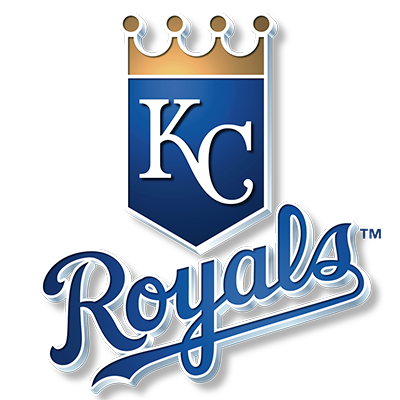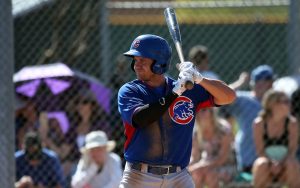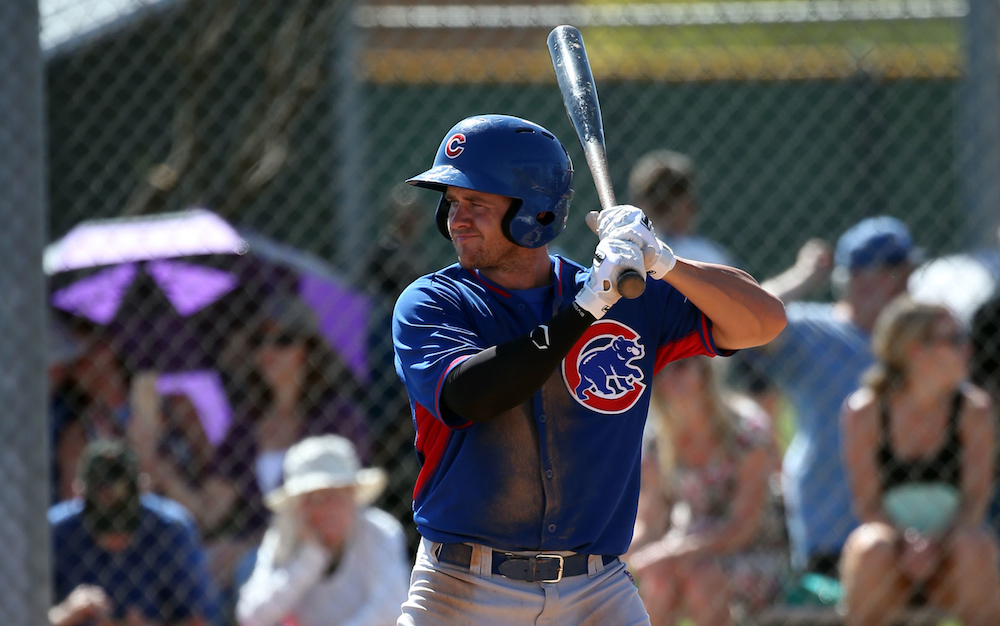Feature Photo: Donnie Dewees, CF, Royals
 Donnie Dewees (CF, Royals) learned his world would be shifting in a February 8 phone call from Chicago Cubs farm director Jaron Madison. The outfielder learned during the call that he had been traded to the Kansas City Royals in exchange for right-handed pitcher Alec Mills as a part of the Cubs’ stockpiling of pitching depth this winter.
Donnie Dewees (CF, Royals) learned his world would be shifting in a February 8 phone call from Chicago Cubs farm director Jaron Madison. The outfielder learned during the call that he had been traded to the Kansas City Royals in exchange for right-handed pitcher Alec Mills as a part of the Cubs’ stockpiling of pitching depth this winter.
The news came with some excitement about a new opportunity, but it changes little about how Dewees plans to approach the upcoming season.
“As for my goals, it won’t change anything, really. I’m still going to go out and grind every day to be the best I can,” Dewees shared with me in a text message a few days after the trade.
As a Cub, Dewees was a part of a winning culture that runs from the top to the bottom of the organization. He knows the same can also be said of the Royals’ culture.
“I look forward to progressing and getting the opportunity to move up and play with a great organization,” the highly touted center fielder said.
Dewees, a second-round draft pick from the University of North Florida, moved steadily through the Cubs’ farm system since they selected him with the 47th overall pick in 2015.
His development in the Royals’ system figures to advance at a similar pace as it has the past two seasons, and Dewees will take with him the added benefit of two years of using neuroscience, a unique player development technique embraced by the Cubs (and just a handful of other organizations) to improve his pitch recognition skill.

Donnie Dewees, CF, Royals
Dewees credits this climb, at least in part, to his work with the software, which he refers to as “neuro”. It was created by NeuroScouting, LLC, which was cofounded by Brian Miller and Wesley Clapp and is based in Cambridge, Mass. “NeuroScouting was started in 2007 with a mission focused on translating the latest brain research into real-world applications,” Miller and Clapp said.
To players like Dewees, it is a seemingly simple program that helps with pitch recognition and reflexes.
“It’s just a standard computer and you use the space bar. It’s very similar to what you would see in a game,” Dewees said in a recent phone interview. In a separate interview last July, Dewees talked about the program, comparing it then to a video game that recreates in-game situations and tests the way hitters react to pitches.
The 23-year-old said the process of using the program each time takes just about eight minutes to complete the day’s work. That work is focused on building his pitch recognition skills, and developing better plate discipline to lay off of bad pitches.
“The schedule is every day when we’re at home, and then once per series on a road trip.” Dewees said.
The NeuroScouting software program is built to continue challenging participants as they use it.
“You graduate through levels as you use it, and it gets harder. It’s pretty fast-paced, and I have seen the difference it has made in helping me lay off of pitches.” Dewees said.
He cited improved patience at the plate as the most significant benefit from his time spent using the program, and his numbers bear this out to a degree. His walk percentage jumped from 4.6 percent with the Short-Season A Eugene Emeralds in 2015 to 7.1 percent during his time with the Class A South Bend Cubs in 2016. The trend continued after his move up to High A Myrtle Beach in late July, with a 6 percent walk rate over 167 plate appearances.
With his first full professional season under his belt, Dewees has also been working this offseason to better maintain his physical stamina. He experienced the difficulty in keeping on body weight in 2015, dropped to 180 pounds, and Dewees credits the work of Cubs’ nutritionists for getting him back to his normal playing weight of 191 pounds by the time the 2016 season ended.
“When you drop weight like that by the end of the season, the fatigue can impact your performance. At the plate, your hands get slower. I dropped a bat size near the end of last season to make up for that.” Dewees said.
The numbers Dewees has put up in the minors so far have carried him through three levels in just two seasons, and to keep moving, he said he is working on improving the finer things like bunting and baserunning.
Dewees swiped 31 bases between South Bend and Myrtle Beach last year, so if he can continue to improve that aspect of his game, there’s potential for him to be a top-of-the-order hitter. His .339 on-base percentage at Myrtle Beach only stands to improve because of his work with the NeuroScouting program.
Dewees doesn’t hesitate to point to the program with aiding his performance, and he has also seen other players in the Cubs’ system have a similar experience.
“Some guys see it as a chore or a hassle, and they don’t really want to do it every day. But the ones who were all for it saw the benefits. I could see that they got better.” Dewees said.
The company itself is a bit of a mystery, and it is not even clear which, or how many, major league organizations use its program (including Dewees’ new team). But with the World Series champion Cubs on board, and the high praise of prospects like Dewees, NeuroScouting’s clientele could expand.
NeuroScouting’s Miller and Clapp shared via email recently that their early focus was in working with “very select MLB organizations [sic] to continually optimize the platform to best identify and develop the neural systems that are critical for elite baseball performance.”
The cofounders said their initial interest in baseball stemmed from personal passions for the sport, but while they are actively involved in scouting and player development, they also see the potential for benefits in other ‘read-and-react’ sports and even beyond the world of sports altogether.
As for Dewees, his improved pitch recognition has improved his plate discipline, and this growth might be among his strongest assets on his course to the majors. Because of his speed and range in the outfield, he is best suited to play center field, and he draws comparisons to Brett Gardner (LF, Yankees), who had a similar overall profile prior to being drafted in 2005. He has surprising pop for his 5’11”, 190-pound frame and the ability to spray the ball to all fields.
There’s enough in the overall profile to make a case that Dewees could move through the Royals’ system more smoothly than he might have in the crowded Cubs’ system, but Dewees is still a couple years away. In the long term, he has the potential to at least fill the role of a fourth or fifth outfielder on a big league roster, and possibly reach a ceiling as an everyday player. For now, he could start the 2017 season at Double-A Northwest Arkansas in the Southern League.


